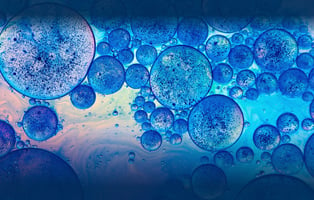L1000 is a high-throughput bead-based gene expression profiling assay that directly measures the mRNA abundance of 978 “landmark” genes selected to represent the diversity of biological pathways and processes in human cells. Researchers use this subset of the transcriptome to computationally infer the expression of an additional 11,350 genes not explicitly measured (Subramanian et al., 2017).
The L1000 assay was developed by the Library of Integrated Network-Based Cellular Signatures (LINCS) Consortium as a key component of the Connectivity Map project. Researchers can use the L1000 data in the Connectivity Map to compare the gene expression profiles of diseased, drug-treated, and healthy cells and uncover connected genes and pathways involved in disease progression and response to treatment.
But how does the L1000 technology work, and will novel ultra-high-throughput bulk 3’ mRNA-seq methods supersede it for future drug discovery projects?
Let’s find out.
The L1000 assay: Cost-effective and scalable
The proof-of-concept Connectivity Map used microarray technology to report on the transcriptomic effects of 164 drugs, but this, and more recent RNA-seq technologies, are too expensive and not scalable enough for the goal of a perturbation screen with thousands of compounds (Lamb et al., 2006).
The L1000 technology was developed to overcome these limitations.
It successfully enabled the second phase of the Connectivity Map to include gene expression signatures for hundreds of thousands of samples treated with over 30,000 small molecule compounds and gene knockdown/overexpression (Subramanian et al., 2017).
A bead and flow cytometry-based measurement of gene expression
Researchers developed L1000 based on the idea that expression information for most of the transcriptome can be captured by measuring the activity of a small subset of genes.
Therefore, in a few key ways, the L1000 gene expression profiling assay differs from traditional next-generation sequencing-based RNA-seq methods such as sequencing-by-synthesis from Illumina or DNA nanoball sequencing from MGI Tech.
It relies on ligation-mediated amplification (LMA) followed by the capture of the amplification products on fluorescently tagged Luminex beads.
This bead-based hybridization approach has the advantage that it readily detects non-abundant transcripts, a challenge that requires costly deeper sequencing if using standard RNA-seq approaches.
One downside to L1000 is that no information is provided for around half the protein-coding genes in the human genome. This is because the number of available Luminex bead colors limits direct measurements to only around 1000 genes with a further 11,350 computationally inferred using a method called linear regression.
Critically, the genes represented by this missed half of the transcriptome might be necessary for detecting relevant target candidates, off-target effects, novel therapeutic mechanisms, or the repurposing potential of a given compound.
How the L1000 gene expression profiling technology works
Here’s how L1000 works in drug screening as in the Connectivity Map:
-
Cells treated with drugs or genetic perturbations are lysed in 384 well plates, and mRNA transcripts are captured on oligo-dT plates and reverse-transcribed into first-strand cDNA.
-
Biotinylated gene-specific probes containing barcodes for one of the “landmark” genes and universal primer sites anneal to the first strand cDNA and undergo amplification, resulting in barcoded amplicons.
-
These gene-specific barcoded amplicons hybridize with their corresponding Luminex beads tagged with a “landmark” gene sequence.
-
A Luminex two-laser flow cytometer uses one laser to detect gene identity via bead color and another to detect transcript abundance by measuring fluorescent intensity after staining with biotin-binding streptavidin-phycoerythrin.
Novel ultra-scalable RNA-seq-based methods for drug screens
L1000 has advanced our understanding of molecular mechanisms and the discovery of novel therapeutics in diverse disease areas, from cancer to neurodegeneration (Gillette et al., 2020; Lee et al., 2020). Still, it is limited to the direct measurement of only around 5% of the protein-coding transcriptome.
In contrast, novel bulk 3’ mRNA-seq methods offer a fast, cost-effective, and comprehensive way to directly detect the expression of over 20,000 genes in thousands of samples in the same sequencing run (Alpern et al., 2019).
Technologies such as MERCURIUS™ DRUG-seq lyse cells directly in 384-well plates, followed by reverse transcription, sample barcoding of the 3’ end of mRNA, and pooling of all samples into the same tube. Removing RNA extraction stages and multiplexing samples early in the pipeline significantly reduces hands-on time, consumable expenses, and cost per sample, with no compromise on data quality.
This technology can help biotechnology and pharmaceutical companies accelerate their research and development efforts by allowing ultra-high-throughput compound screenings with more samples, cell types, drugs, and experimental conditions, all at a higher transcriptome coverage than possible with L1000.
Please get in touch with us to learn more about the L1000 technology or how MERCURIUS™ DRUG-seq can help your next compound screen.
References
- Alpern, D. et al. (2019) ‘BRB-seq: ultra-affordable high-throughput transcriptomics enabled by bulk RNA barcoding and sequencing’. Genome biology, 20(1), pp.1-15. Available at: https://doi.org/10.1186/s13059-019-1671-x.
- Gillette, M.A. et al. (2020) ‘Proteogenomic characterization reveals therapeutic vulnerabilities in lung adenocarcinoma’. Cell, 182(1), pp.200-225. Available at: https://doi.org/10.1016/j.cell.2020.06.013.
- Lamb, J. et al. (2006) ‘The Connectivity Map: using gene-expression signatures to connect small molecules, genes, and disease’. Science, 313(5795), pp.1929-1935. Available at: https://doi.org/10.1126/science.1132939.
- Lee, S.Y. et al. (2020) ‘A proteotranscriptomic-based computational drug-repositioning method for Alzheimer’s disease’. Frontiers in pharmacology, 10, p.1653. Available at: https://doi.org/10.3389/fphar.2019.01653.
- Subramanian, A. et al. (2017) ‘A Next Generation Connectivity Map: L1000 Platform and the First 1,000,000 Profiles’, Cell, 171(6), pp. 1437-1452.e17. Available at: https://doi.org/10.1016/j.cell.2017.10.049.




